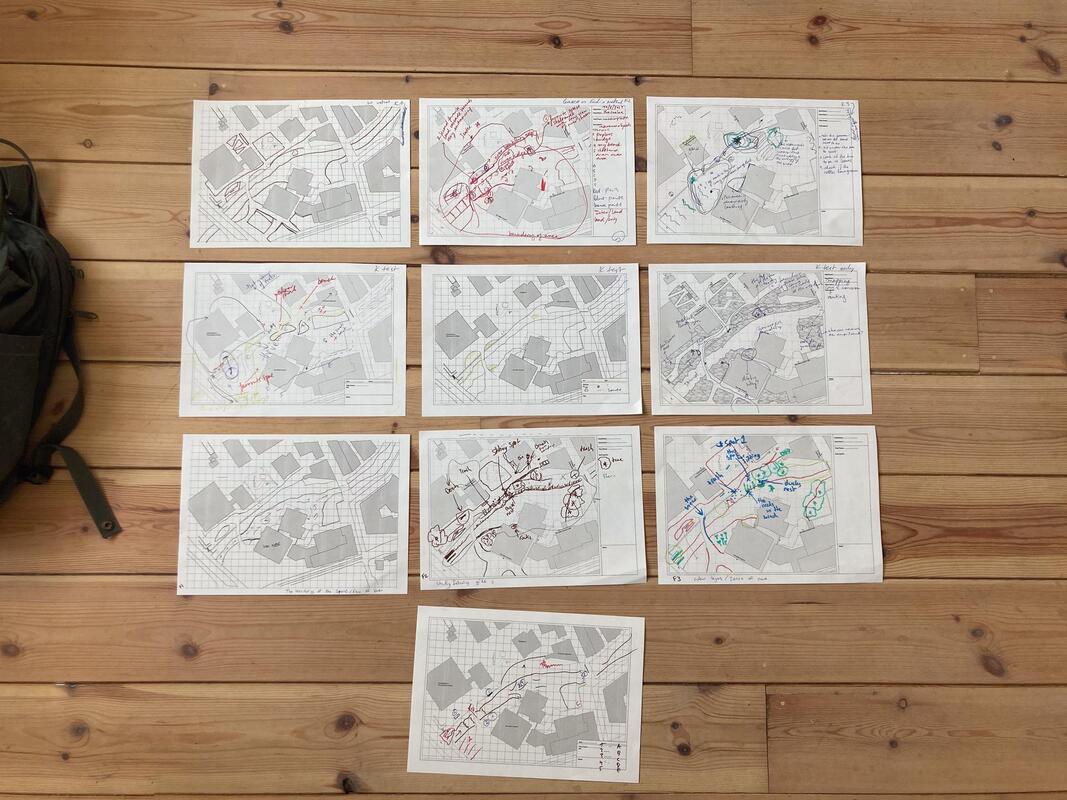Stewards of the Dommel
|
The Dommel river bank in Eindhoven is a landscape defined by multiple approaches to care, implemented by multiple different actors. Some care practices are commissioned, institutional and formal, others are spontaneous, personal and informal. In other words it is a landscape that has many stewards with many perspectives that might not encounter each other.
Stewards of the Dommel brings those perspectives and practices together. The aim is to better understand how care is practised from all these different perspectives and to assemble an incomplete atlas / ontology / cosmology / manifesto, bringing into question how do we begin to care about others of whose existence we might not even have been previously aware?
The theoretical framework of this research draws on Doreen Massey’s propositions and theory of spaces as something that is “always under construction”. Space is not simply made and kept in static state. Rather it is through the combination of the material practices of a range of human and more-than-human participants, and the interaction thereof that the space is continuously created into what it appears to be. The atlas of care and concern has been developed on the basis of a participatory mapping methodology, the participants were sent a base map with a set of instructions, that would guide them in mapping and documenting their perspective and territories of care. Frequently participatory mapping would be done either as a group activity under the guidance of a facilitator, or as a series of interviews. In this case, we wanted to avoid that the participant’s stories and contributions would be influenced either by the presence of other participants, or by the wording and focus of the facilitator or interviewer. We didn’t want ‘our’ way of seeing and understanding care to influence the way people would describe and document it. After receiving their filled in maps, a debriefing interview was held by Lea Graef that would deepen and specify the objects and topics brought up by the individual participants. The individual contributions are then processed digitally to enable the visual and conceptual analysis, resulting in an overview of the content, categories and types of information that has been submitted. The findings and incomplete cartography is then formulated by synthesising the collective thematic maps. This design research was done in collaboration with Felix Bell, and was partly made possible with the support of the Creative Creative Industries Fund NL.
|






